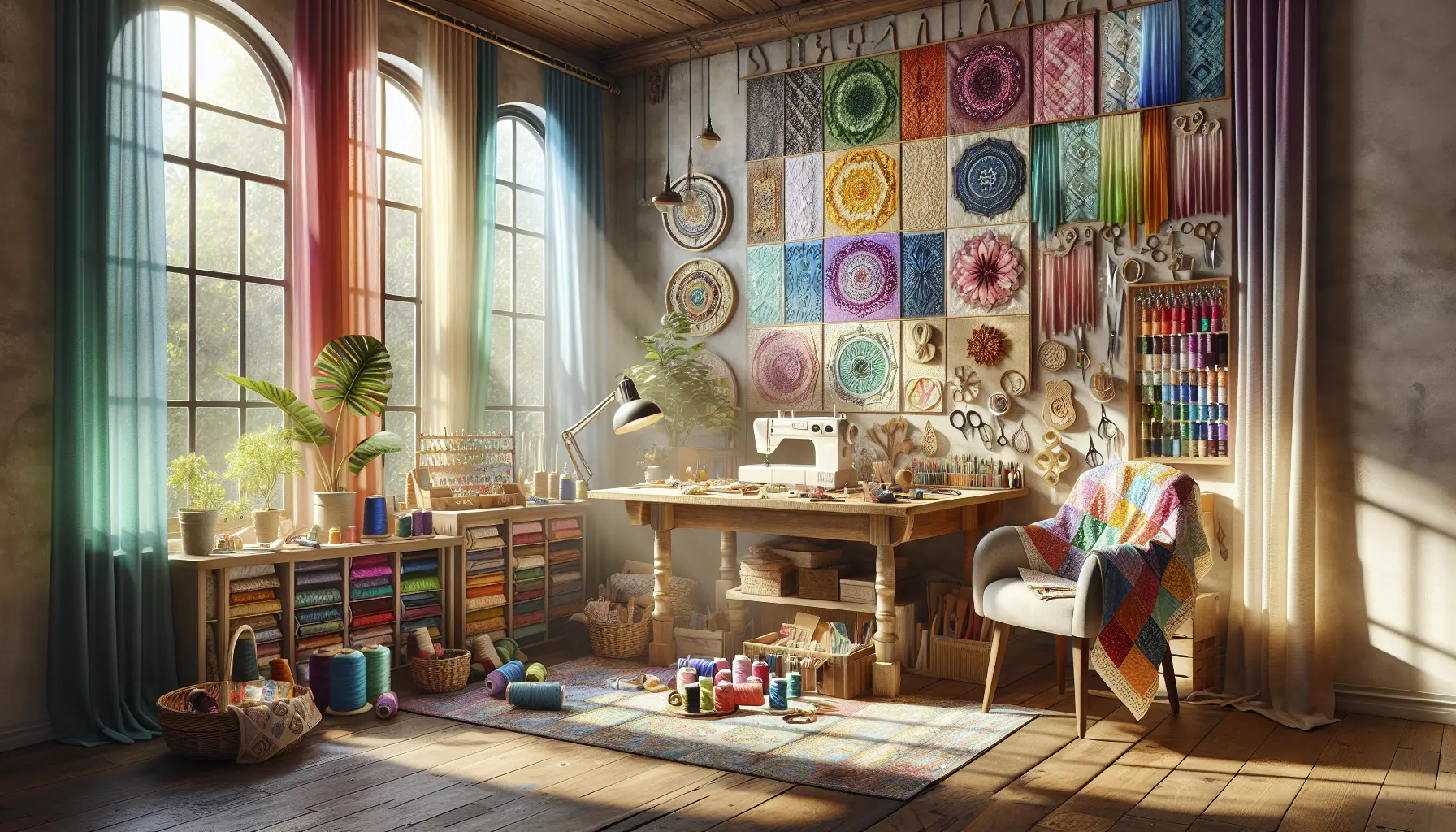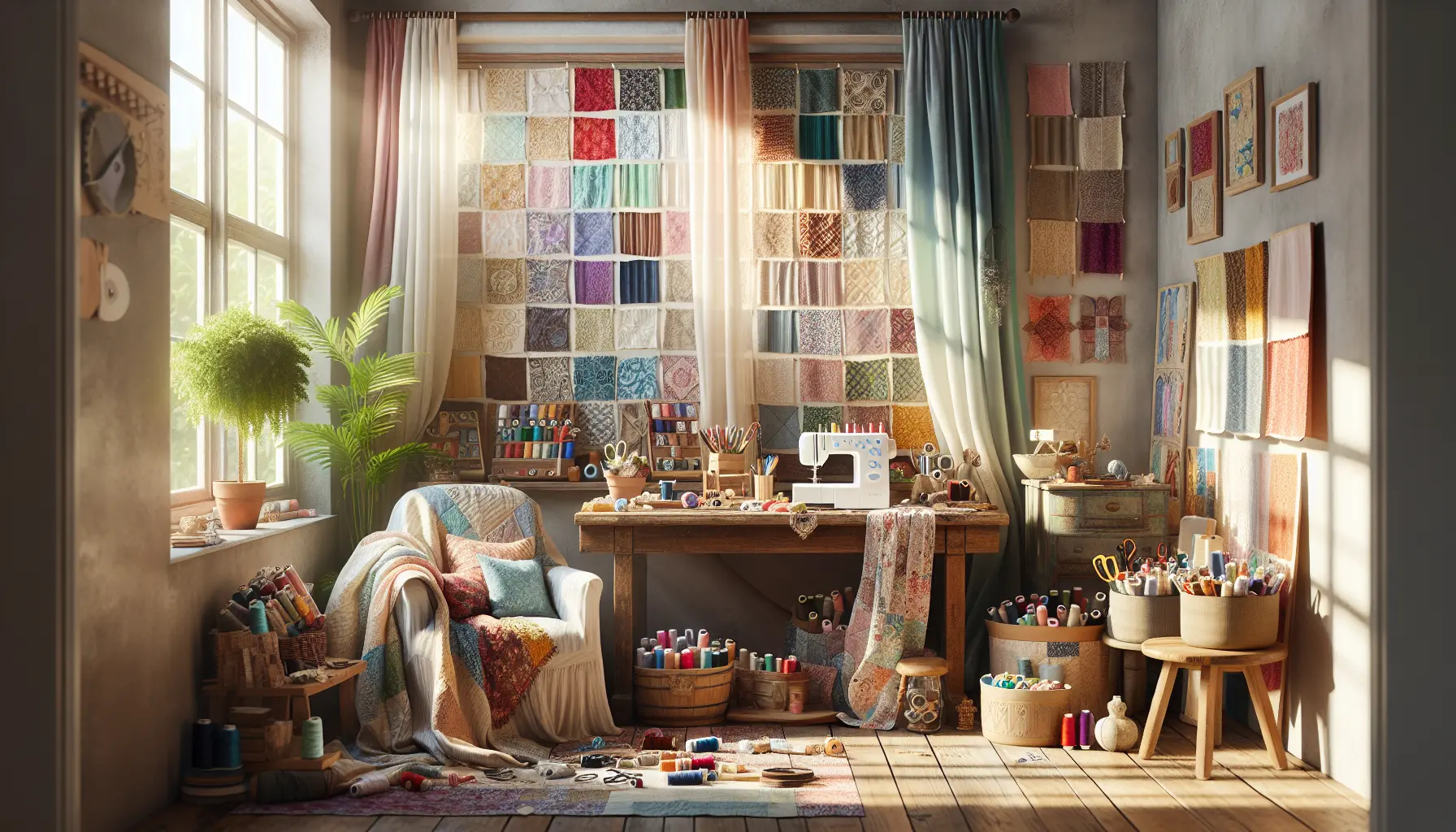Fabric Crafts Inspire Creative DIY Projects

Unleash your inner artist and tap into the creative potential of fabric, a versatile medium that can be molded, shaped, and stitched into a wide range of stunning pieces.
Fabric crafts offer a world of textile artistry, where you can express yourself through vibrant colors, intricate patterns, and unique textures. With endless design options, you can create one-of-a-kind pieces that reflect your personality and style.
Whether you’re a seasoned sewer or a DIY enthusiast, fabric crafts provide a platform to experiment with different techniques, such as embroidery, quilting, and needlework. By combining these skills, you can create functional items like patchwork blankets, intricately embroidered clothing, and stunning quilts that reflect your unique textile artistry.
What Are Fabric Crafts
Fabric has long been a canvas for human imagination, transforming simple threads into wearable art, functional items, and stunning decorations.
Definition of Fabric Crafts
Fabric crafts refer to the art of creating items using fabric, yarn, or thread as the primary material, such as sewing upholstery to create comfortable furniture or crocheting blankets for warmth.
History of Fabric Crafts
For centuries, fabric crafts have been an integral part of various cultures, with ancient Egyptians using appliqué to adorn their clothing and medieval Europeans employing felting to create warm accessories.
Meanwhile, in Asia, weaving and knitting were used to create intricate textiles for everyday use.

Exploring Textile Artistry Techniques
As a medium that seamlessly merges function and creativity, textile art has long fascinated artists and crafty individuals alike, offering a unique canvas for self-expression and innovation.
Discovering the World of Fabric Manipulation
In the realm of textile artistry, batik plays a crucial role in creating stunning pieces of art, allowing artists to experiment with intricate designs, patterns, and textures that push the boundaries of creativity.
By stenciling various textile artistry techniques onto different fabrics, artists can unlock new ways of expressing themselves, experimenting with diverse colors and textures to create unique and personalized pieces of art. Beyond its aesthetic appeal, fabric crafts such as macramé, batik, tiedye, painting, printing, and stenciling offer a wide range of creative possibilities.
Essential Tools For Fabric Projects
Transforming humble fabrics into stunning creations requires more than just a creative vision – it demands the right arsenal of tools to bring it to life.
When it comes to upcycling, having the right tools is crucial for achieving professional-looking results and avoiding common mistakes that can be costly and time-consuming to fix.
Without the right tools, even the most experienced crafters can struggle with inaccurate measurements, uneven stitches, and poor-quality finishes.
In contrast, using essential tools can save time, reduce frustration, and ensure that your fabric projects turn out exactly as you envisioned.
One of the most significant benefits of using essential tools is the accuracy and precision they provide. For instance, a tailor’s measuring tape ensures that your patterns and cuts are exact for DIY fashion projects, while a good pair of scissors can make all the difference when upcycling, repurposing, and crafting unique accessories, soft furnishings, and decor.
Popular Fabric Crafting Styles Explained
The textile world is a tapestry of creativity, woven from threads of tradition and innovation, where artisans weave stories of human connection and self-expression.
The fiber arts have a rich history, with origins tracing back to the earliest forms of human expression.
Over time, fabric crafting has evolved into a diverse range of styles and techniques, each with its own unique characteristics.
From the subtle nuances of pattern cutting to the art of garment construction, fabric crafting offers endless possibilities for creative exploration.
With the right tools and techniques, beginners can start exploring the world of fabric crafting, starting with basic stitching techniques and choosing the right fabric for their project.
Essential tools for fabric crafting include scissors, needles, and threads, which can be used to create a wide range of designs, from intricate manipulation of fabric to vibrant dyeing techniques. As fabric crafting continues to evolve, it incorporates various techniques such as fiber arts, manipulation, dyeing, pattern cutting, garment construction, and dressmaking.
- The earliest evidence of textile production dates back to around 7000 BCE, during the Neolithic period.
- There are over 100 different types of fabric, including cotton, silk, wool, and linen, each with its own unique properties and uses.
- Fabric crafting is a global industry, with the global textile market projected to reach $23 trillion by
- The art of quilting, a form of fabric crafting, has been recognized by UNESCO as an intangible cultural heritage of humanity.
How To Choose Suitable Fabrics
When crafting a design, the careful sculpting of every element is crucial, and the right fabric is the foundation upon which a successful project is built.
Understanding fabric properties is the first step in selecting the perfect fabric for your project.
This includes determining the fabric type, whether it’s natural, synthetic, or blended, as well as identifying fabric weights and their applications, such as lightweight fabrics for summer dresses or heavy fabrics for winter coats.
Recognizing fabric textures and their uses is also vital, as it can greatly impact the overall look and feel of your project.
For instance, smooth fabrics like cotton or silk are ideal for garments that require a soft, elegant touch, while rougher fabrics like burlap or canvas are better suited for design projects that require a more rugged, natural look. By choosing the right fabric, you can ensure that your dolls and stuffed animals are both cuddly and durable.
Upcycling Ideas For Fabric Crafts
In a world where fast fashion dominates, giving old fabrics a new lease on life is a refreshing respite from the wasteful cycle of consumption and disposal.
Transforming discarded fabric into unique creations not only reduces waste but also unlocks a world of creative possibilities.
By upcycling fabric, individuals can reduce waste and conserve natural resources, decrease their carbon footprint, and promote sustainability.
This eco-friendly approach to crafting also allows for the creation of one-of-a-kind, budget-friendly pieces that add a touch of elegance with ribbon crafts and sophistication to any space.
Incorporating flowers into upcycling projects adds a delicate charm, while techniques like sewing, patching, and felting can breathe new life into old fabrics. The history of fabric upcycling dates back to ancient cultures, where resourcefulness and thriftiness were essential survival skills, much like the creative reuse of cloth scraps in rag rugs, origami, ribbon crafts, flowers, jewelry, and book covers.
- The global fashion industry produces over 12% of global greenhouse gas emissions, making upcycling a crucial step towards reducing waste and conserving natural resources.
- According to the United States Environmental Protection Agency (EPA), the average American generates about 82 pounds of textile waste per year, highlighting the need for sustainable practices like fabric upcycling.
- Upcycling fabric can reduce carbon emissions by up to 70% compared to producing new fabrics, making it a significant contributor to a more eco-friendly lifestyle.
- The textile recycling industry is projected to grow to $5 billion by 2025, indicating a shift towards sustainable fashion practices and a growing demand for upcycled fabric creations.
Beginnerfriendly Fabric Craft Projects
Unleashing your creativity and developing new skills has never been easier, thanks to the world of fabric crafts.
Fabric crafts are perfect for beginners because they require low cost and accessible materials, eliminating the need for a large initial investment.
You don’t need advanced sewing skills to get started, making it an inclusive hobby for everyone.
This flexibility also allows for experimentation and making mistakes, which are an essential part of the learning process.
One of the most significant benefits of fabric crafts is the ability to create functional items like baskets and pouches, as well as decorative wall art for your home. These simple projects can help build confidence and develop problem-solving skills through trial and error. As you delve deeper into fabric installations, you’ll discover the joy of creating unique pieces that reflect your personal style, while also learning valuable skills that can be applied to various forms of craft, such as wall art, installations, baskets, bowls, wrapping, and postcards.
Creating Unique Fabric Art Pieces
Transforming Spaces and Selves: The Power of Unique Fabric Art Pieces By crafting mosaics of memories and emotions, fabric art has the power to reconfigure not only our living spaces but also our sense of identity.
When it comes to storytelling through fabric, every stitch, every color, and every texture conveys a message that is deeply personal and emotional.
Coasters of nostalgia can capture landscapes of memories, experiences, and cultural heritage, preserving them for generations to come.
The tactile nature of fabric art also promotes mindfulness and calm, offering a therapeutic escape from the stresses of modern life, much like a soothing bookmark.
Unique fabric art pieces can elevate home decor, adding a touch of personality and sophistication to any room, making them ideal ornaments for any occasion. By incorporating fabric into our daily lives, we can weave a sense of beauty into our surroundings through creative projects like landscapes, mosaics, coasters, bookmarks, ornaments, and gift tags.
| Benefits of Fabric Art | Impact on Living Spaces and Selves |
|---|---|
| Promotes mindfulness and calm | Reconfigures sense of identity |
| Elevates home decor with personality and sophistication | Preserves memories and cultural heritage for generations |
| Offers a therapeutic escape from modern life | Weaves a sense of beauty into surroundings |



